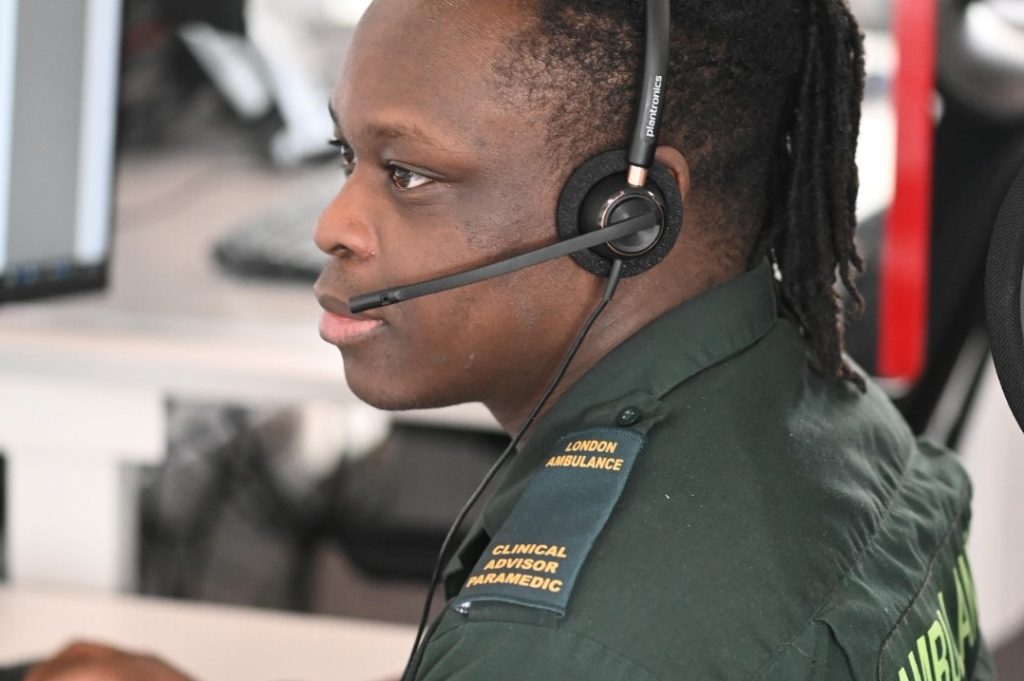‘Hear and treat’ frees up thousands of hours for ambulance crews and help Londoners get the right care
New data published today (10 April) has shown that London Ambulance Service’s trailblazing method of treating Londoners over the phone has freed up thousands of hours for ambulance crews and reduced the time it takes for paramedics to reach the sickest patients.

Known as ‘hear and treat’, this has helped ambulance crews reach other patients faster and has helped the Service meet its target in March for responding to Cat 1 incidents – the most seriously ill patients. It has also helped reduce our response time for Cat 2 incidents by over four minutes on average compared to March the previous year.*
And despite London Ambulance Service experiencing some of the busiest ever months for demand this winter, the proportion of patients the Service took to hospital was lower than during the same period the previous year.
During winter 2024-25, call handlers took on average 520 extra 999 calls a day compared to the year before, an increase of around nine percent, but ambulance crews were still taking only around 84 extra people on average a day to London’s hospitals.
Daniel Elkeles, Chief Executive at London Ambulance Service, said: “Despite the increasing demand on our service this winter, we have continued to focus on driving down the time it takes to get to our most seriously ill patients and reduce the number of patients we take to busy A&Es when other forms of care would be more suitable.
“We’ve been able to do this thanks to the innovative work of our colleagues at the Service and our NHS partners across the capital. This has helped Londoners get the right care that they need while freeing up our ambulance crews to respond to our sickest and most seriously injured patients.
“We have more to do, but we’re proud that we have managed to maintain our service for patients despite a nine percent increase in demand over winter and without spending any more money than we did in the previous year.”
Clinicians at London Ambulance Service’s clinical hub use ‘hear and treat’ over the phone to provide expert assessments and clinical oversight to refer patients to the most appropriate care pathway and avoid people going to busy hospitals when it’s not necessary.
More than one in five London Ambulance Service patients are treated in this way – one of the highest rates in the country. Nearly 275,000 Londoners have been treated over the phone by the Service’s clinicians to avoid unnecessary trips to hospitals in the past year.
Mike Ward, Deputy Director of Clinical Safety and Compliance at London Ambulance Service, said: “Given the pressure on health and care services across London, we need to do all we can to send ambulances only where they are needed and send patients to the right place to be treated. ‘Hear and treat’ plays a vital role in that alongside our mental health joint response unit, community cars and other innovations.
“This means providing more personalised care in patients’ homes through specialist teams, reducing unnecessary conveyances to hospitals and helping to improve waiting times in emergency departments. Our Integrated Care Coordination Hubs, in partnership with Integrated Care Boards and provider organisations, ensure our patients are getting the right care first time.
“By maximising our use of ‘hear and treat’, we are able to release a significant number of hours back to ambulance crews so they can respond to our sickest patients. On average this equates to around 9,200 hours for our double-crewed ambulances – 18,400 people hours per week.”
999 calls are received and triaged by call handlers in the London Ambulance Service control room or triaged by NHS111 received electronically. Ambulances are dispatched to life-threatening Cat 1 and Cat 2 calls.
Patients treated using ‘hear and treat’ are then referred to an alternative pathway option appropriate to the patient’s condition.
This can include self-care advice, care at a community service such as an urgent care centre, a pharmacy or a mental health crisis team.
Earlier this year, London Ambulance Service’s clinical hub was the recipient of the Exceptional Team Award at the Ambulance Leadership Forum, hosted by the Association of Ambulance Chief Executives (AACE).
Notes to editors
*On average our Cat 1 response times were less than seven minutes and our response to Cat 2 calls were less than 30 minutes in March.
- Cat 1: 6 minutes and 58 seconds
- Cat 2: 29 minutes and 2 seconds
In March last year, our Cat 1 response was 7 minutes and 11 seconds and Cat 2 was 33 minutes and 11 seconds.
20.7% of London Ambulance Service patients were treated using ‘hear and treat’ in the year up to the end of March 2025 compared to 15.5% the previous year.
You can view the full Ambulance Quality Indicators Data 2024-25 on NHS England’s website here.

Follow us on social media: